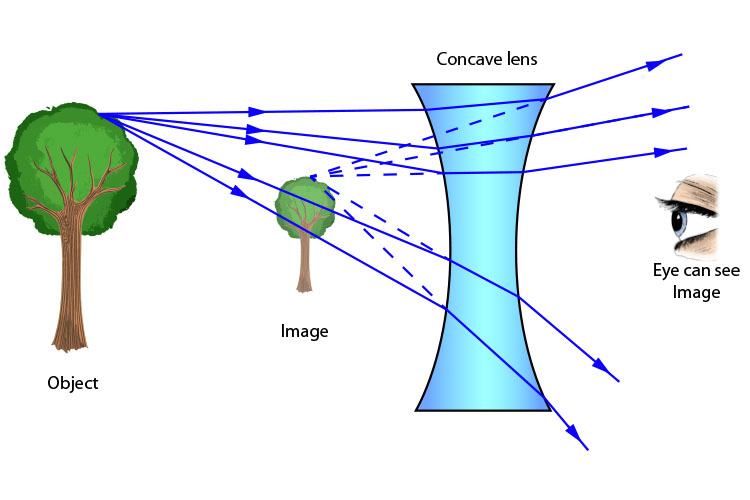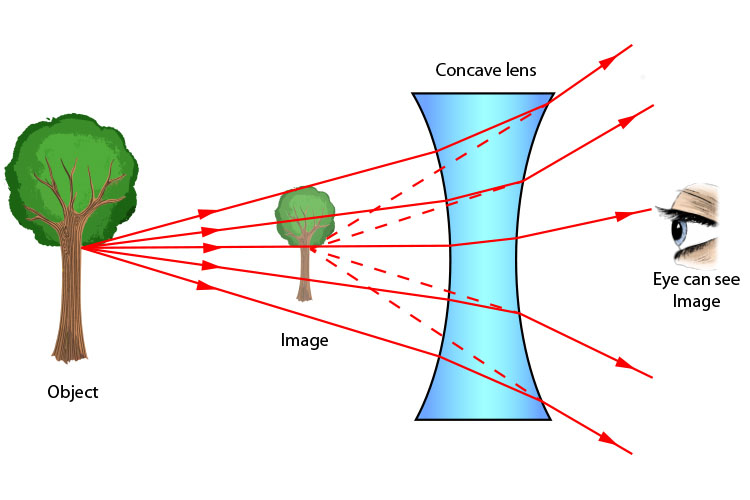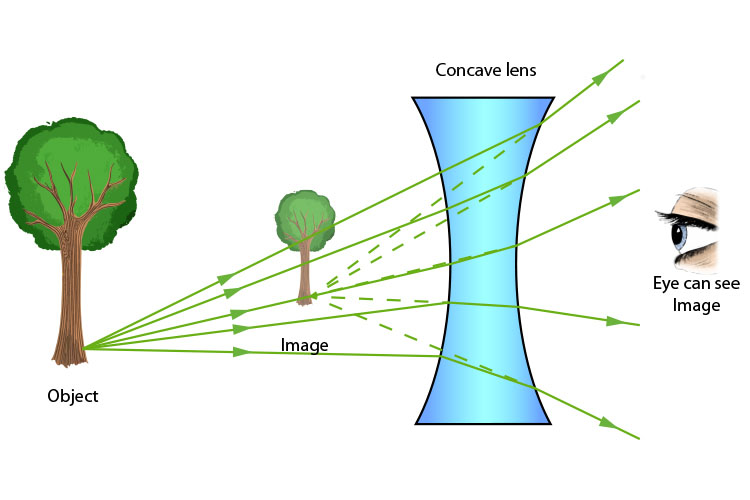Concave lens – One point many rays
Light will reflect off any point of a surface and travel in many directions. If you put a concave lens in the way, some of these light rays will enter the lens from points all over its surface.
A tree at a large distance from the concave lens will pass light into the lens. The concave lens can form a virtual image of the tree, the right way up. This image can only be seen and can not be captured on a piece of paper. This image is smaller than the object tree and is on the same side of the lens as the object tree (this will be explained later).

Each point on the object will reflect light rays on to the concave lens.

Light from the concave lens which enters the eye will make the eye think the object is closer than it is.

Light rays from every point of the object are refracted all over the concave lens.

For every object there are numerous rays being sent into the concave lens at many angles but these rays can make the eye think the object is smaller than it is.




